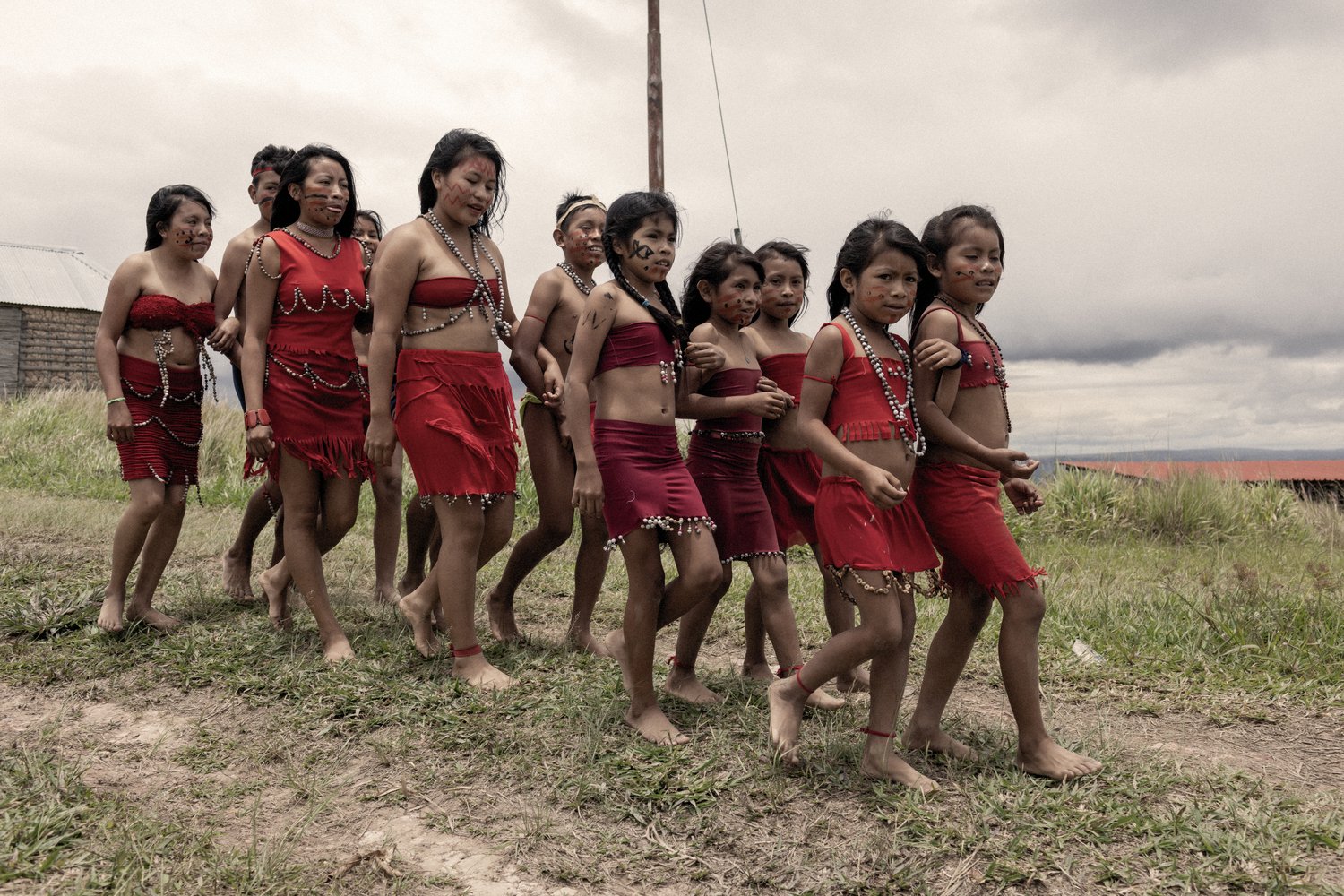UNHCR helps Indigenous Venezuelans to stay on their lands

UNHCR helps Indigenous Venezuelans to stay on their lands
A group of young people from the indigenous Pemón village of Paraitepuy, in the Gran Sabana region of southeastern Venezuela, prepare to perform traditional dances as part of a welcoming ceremony for visitors.
Tucked alongside Mount Roraima – the iconic, flat-topped, sandstone mountain in southeastern Venezuela’s remote Gran Sabana region – the village of Paraitepuy was long a bustling base camp for the hikers who flocked from across the world to one of South America’s largest national parks. The mountain was also the main source of income for the village’s 560-odd inhabitants, with many of the men serving as sherpas for the steady stream of visitors.
But now, the cabins stand empty, echoing only with the whistling of the wind.
The crisis in Venezuela led to a precipitous drop in tourism, and the remaining trickle of visitors largely dried up during the COVID-19 pandemic.
“Everything came to a stop, and people had to seek out other ways of meeting their basic needs,” said Florencio Ayuso, 53, the “capitán,” or chief of Paraitepuy, one of the dozens of Indigenous Pemón communities that dot the Gran Sabana.
Given the lack of remaining livelihood options in the region, which also has little in the way of infrastructure such as hospitals and high schools, villages across the Gran Sabana are shrinking. Their inhabitants are leaving to seek better lives in distant cities, abroad, or in the thousands of wildcat gold mines that are wreaking environmental havoc on this once-pristine landscape.
The threat of hunger is a major driver of displacement, according to “Capitana” Lisa Henrito, chief of the village of Maurak. Despite it being a large and relatively prosperous indigenous settlement in the Gran Sabana, she said that parents from Maurak often set out for the mines when they find themselves unable to feed their children.

Lisa Henrito, 49, is the “capitana,” or chief of the Maurak Indigenous community, in Venezuela’s southeastern Gran Sabana region.
“Everyone is going to the mines,” said Lisa, 49, who is one of a substantial number of female chiefs among the Pemón. “Families are being destroyed because fathers go to the mines, fall in love with another woman, and forget their families. Women are going to the mines and leaving their children.”
Threatened traditions
And while it might sometimes provide a quick – if fleeting – fix to acute poverty, mining is also a dangerous occupation. The collapse of wildcat mines is a common occurrence, and mining communities are rife with dengue and sexually transmitted infections, as well as alcoholism, violence, and drug abuse.
Mining also poses a major threat to ancestral ways of life. Mercury from the mines poisons waterways, robbing Pemón communities of both fish and drinking water and imperilling the small-scale subsistence farms, or “conucos”, that have been the backbone of Indigenous livelihoods going back centuries. It is also compromising tourism, one of the region’s only other economic motors.
“Families are being destroyed.”
UNHCR, the UN Refugee Agency, is working with Indigenous communities throughout the Gran Sabana to help prevent displacement and allow residents to stay on their lands, thus protecting traditional ways of life and the region’s unique ecosystem. As well as providing families with food aid and such basic goods as hammocks, mosquito nets, farming tools, and solar-powered lamps, UNHCR is helping improve daily life in communities by rehabilitating and stocking local first aid clinics and installing solar streetlights.
The agency is also working closely with authorities to solve the chronic problem of missing documentation. Because of the sheer distance from most villages to the Gran Sabana’s only hospital, in the border city of Santa Elena de Uairén, a few kilometers from Brazil, women often give birth at home – meaning that their children are often not officially registered. This leads to problems that ripple out over an entire lifetime, complicating even simple tasks, such as registering for school.
"We have been working with 40 Indigenous villages throughout the Gran Sabana to try to provide basic services that were lacking, so that people don’t have to leave their lands to seek those services. By helping make villages safer and easier places to live, we are aiming to maintain theses guardians of the land on their lands," said Jerome Seregni, head of UNHCR’s Ciudad Guayana Field Office which covers eastern Venezuela.
Community ties
In the tiny hamlet of Würuüpö, residents have taken the conscious decision to dissuade community members from decamping to the mines, cities, or other countries. This involves strengthening already-tight community ties to support one another and ensure no one falls through the cracks. Leaders have also worked hard to convince young people that the many risks of mining are not worth the short-term gain and that the traditional conuco subsistence farms are a better bet in the long term, bearing fruit year after year.
Text and media 9
“We’re trying to teach our kids about our roots so that they don’t fall for this bad example and don’t join those who are harming nature,” said Würuüpö’s chief, Karina Benavides, 37, as fellow residents used fire to clear a small plot near the village to plant manioc, one of the Pemón’s staple crops. “Farming is our mine… Nature sustains us, it keeps us alive, and we do it no harm.”
Fourteen-year-old Gregory da Silva, one of the boys clearing the plot in Würuüpö, echoed “Capitana” Karina’s sentiment, saying that the money from mining “gets spent right away.”
“With farming, on the other hand, you harvest a crop, and when you sow some of that, more grows.”
















